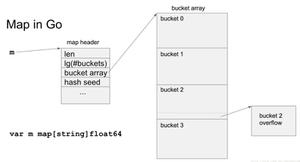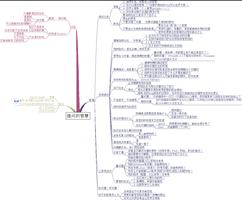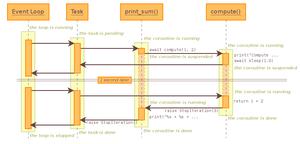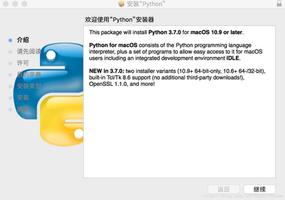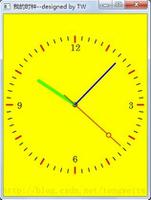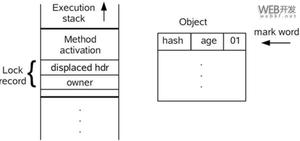python菜鸟教程学习10:数据结构
![python菜鸟教程学习10:数据结构[Python基础]](/wp-content/uploads/new2022/20220602jjjkkk2/2562211158_1.jpg)
列表方法
- list.append(x):把一个元素添加到列表的结尾,相当于 a[len(a):] = [x]。
- list.extend(L):通过添加指定列表的所有元素来扩充列表,相当于 a[len(a):] = L。
- list.insert(i, x):在指定位置插入一个元素。第一个参数是准备插入到其前面的那个元素的索引,例如 a.insert(0, x) 会插入到整个列表之前,而 a.insert(len(a), x) 相当于 a.append(x) 。
- list.remove(x):删除列表中值为 x 的第一个元素。如果没有这样的元素,就会返回一个错误。
- list.pop([i]):从列表的指定位置移除元素,并将其返回。如果没有指定索引,a.pop()返回最后一个元素。元素随即从列表中被移除。(方法中 i 两边的方括号表示这个参数是可选的,而不是要求你输入一对方括号,你会经常在 Python 库参考手册中遇到这样的标记。)
- list.clear():移除列表中的所有项,等于del a[:]。
- list.index(x):返回列表中第一个值为 x 的元素的索引。如果没有匹配的元素就会返回一个错误。
- list.count(x):返回 x 在列表中出现的次数。
- list.sort():对列表中的元素进行排序。
- list.reverse():倒排列表中的元素。
- list.copy():返回列表的浅复制,等于a[:]。
列表当堆栈使用
用 append() 方法可以把一个元素添加到堆栈顶。用不指定索引的 pop() 方法可以把一个元素从堆栈顶释放出来。
列表当队列使用
在队列里第一加入的元素,第一个取出来;但是拿列表用作这样的目的效率不高。在列表的最后添加或者弹出元素速度快,然而在列表里插入或者从头部弹出速度却不快(因为所有其他的元素都得一个一个地移动)。
1 >>> from collections import deque 2 >>> queue = deque(["Eric", "John", "Michael"]) 3 >>> queue.append("Terry") # Terry arrives4 >>> queue.append("Graham") # Graham arrives
5 >>> queue.popleft() # The first to arrive now leaves
6"Eric"
7 >>> queue.popleft() # The second to arrive now leaves
8"John"
9 >>> queue # Remaining queue in order of arrival
10 deque(["Michael", "Terry", "Graham"])
列表推导式
列表推导式提供了从序列创建列表的简单途径。每个列表推导式都在 for 之后跟一个表达式,然后有零到多个 for 或 if 子句。返回结果是一个根据表达从其后的 for 和 if 上下文环境中生成出来的列表。如果希望表达式推导出一个元组,就必须使用括号。
可以对每一个元素逐个调用,Python strip() 方法用于移除字符串头尾指定的字符(默认为空格)或字符序列。
1 >>> freshfruit = [" banana", " loganberry ", "passion fruit "]2 >>> [weapon.strip() for weapon in freshfruit]3 ["banana", "loganberry", "passion fruit"]
一些技巧,round() 方法返回浮点数x的四舍五入值,round() 方法返回浮点数x的四舍五入值,
- x -- 数值表达式。
- n -- 数值表达式,表示从小数点位数。
1 >>> [3*x for x in vec if x > 3] 2 [12, 18] 3 >>> [3*x for x in vec if x < 2] 4[] 5 >>> [x*y for x in vec1 for y in vec2] 6 [8, 6, -18, 16, 12, -36, 24, 18, -54] 7 >>> [x+y for x in vec1 for y in vec2] 8 [6, 5, -7, 8, 7, -5, 10, 9, -3] 9 >>> [vec1[i]*vec2[i] for i in range(len(vec1))]10 [8, 12, -54]11 >>> [str(round(355/113, i)) for i in range(1, 6)]12 ["3.1", "3.14", "3.142", "3.1416", "3.14159"]
嵌套列表
>>> matrix = [... [
1, 2, 3, 4],... [
5, 6, 7, 8],... [
9, 10, 11, 12],... ]
>>> [[row[i] for row in matrix] for i in range(4)][[
1, 5, 9], [2, 6, 10], [3, 7, 11], [4, 8, 12]]
>>> transposed = []>>> for i in range(4):... transposed.append([row[i]
for row in matrix])...
>>> transposed[[
1, 5, 9], [2, 6, 10], [3, 7, 11], [4, 8, 12]]
>>> transposed = []>>> for i in range(4):...
# the following 3 lines implement the nested listcomp... transposed_row = []
... for row in matrix:
... transposed_row.append(row[i])
... transposed.append(transposed_row)
...
>>> transposed
[[1, 5, 9], [2, 6, 10], [3, 7, 11], [4, 8, 12]]
del语句
使用 del 语句可以从一个列表中依索引而不是值来删除一个元素。这与使用 pop() 返回一个值不同。可以用 del 语句从列表中删除一个切割,或清空整个列表。
1 >>> a = [-1, 1, 66.25, 333, 333, 1234.5] 2 >>> del a[0] 3 >>> a 4 [1, 66.25, 333, 333, 1234.5] 5 >>> del a[2:4] 6 >>> a 7 [1, 66.25, 1234.5] 8 >>> del a[:] 9 >>> a10 []
元组和序列
组在输出时总是有括号的,以便于正确表达嵌套结构。在输入时可能有或没有括号, 不过括号通常是必须的。
集合
集合是一个无序不重复元素的集。基本功能包括关系测试和消除重复元素。
可以用大括号({})创建集合。注意:如果要创建一个空集合,你必须用 set() 而不是 {} ;后者创建一个空的字典。
字典
序列是以连续的整数为索引,与此不同的是,字典以关键字为索引,关键字可以是任意不可变类型,通常用字符串或数值。理解字典的最佳方式是把它看做无序的键=>值对集合。在同一个字典之内,关键字必须是互不相同。一对大括号创建一个空的字典:{}。
构造函数 dict() 直接从键值对元组列表中构建字典。如果有固定的模式,列表推导式指定特定的键值对:
>>> dict([("sape", 4139), ("guido", 4127), ("jack", 4098)]){
"sape": 4139, "jack": 4098, "guido": 4127}
字典推导可以用来创建任意键和值的表达式词典
>>> {x: x**2 for x in (2, 4, 6)}{
2: 4, 4: 16, 6: 36}如果关键字只是简单的字符串,使用关键字参数指定键值对有时候更方便
>>> dict(sape=4139, guido=4127, jack=4098){
"sape": 4139, "jack": 4098, "guido": 4127}
遍历技巧
在字典中遍历时,关键字和对应的值可以使用 items() 方法同时解读出来
>>> knights = {"gallahad": "the pure", "robin": "the brave"}>>> for k, v in knights.items():...
print(k, v)在序列中遍历时,索引位置和对应值可以使用 enumerate() 函数同时得到
>>> for i, v in enumerate(["tic", "tac", "toe"]):...
print(i, v)...
0 tic
1 tac2 toe
同时遍历两个或更多的序列,可以使用 zip() 组合
1 >>> questions = ["name", "quest", "favorite color"]2 >>> answers = ["lancelot", "the holy grail", "blue"]3 >>> for q, a in zip(questions, answers):4 ... print("What is your {0}? It is {1}.".format(q, a))5...6 What is your name? It is lancelot.7 What is your quest? It is the holy grail.8 What is your favorite color? It is blue.
format格式化函数
print("网站名:{name}, 地址 {url}".format(name="菜鸟教程", url="www.runoob.com"))# 通过字典设置参数site = {"name": "菜鸟教程", "url": "www.runoob.com"}
print("网站名:{name}, 地址 {url}".format(**site))
# 通过列表索引设置参数
my_list = ["菜鸟教程", "www.runoob.com"]
print("网站名:{0[0]}, 地址 {0[1]}".format(my_list)) # "0" 是必须的
以上是 python菜鸟教程学习10:数据结构 的全部内容, 来源链接: utcz.com/z/537736.html



